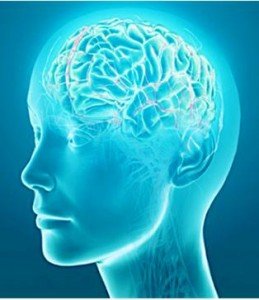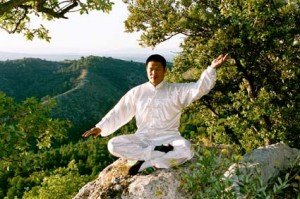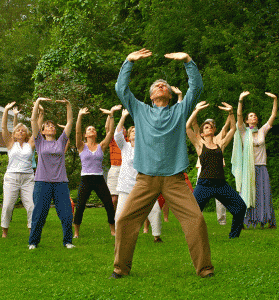Mind-Body Medicine Research Updates
Compiled by Kevin W Chen, PhD
Breathing-based meditation decreases post traumatic stress disorder symptoms in U.S. military veterans: a randomized controlled longitudinal study. J Trauma Stress. 2014 Aug;27(4):397-405. By Seppälä EM, Nitschke JB, Tudorascu DL, et al. 
Given the limited success of conventional treatments for veterans with post traumatic stress disorder (PTSD), investigations of alternative approaches are warranted. We examined the effects of a breathing-based meditation intervention, Sudarshan Kriya yoga, on PTSD outcome variables in U.S. male veterans of the Iraq or Afghanistan war. We randomly assigned 21 veterans to an active (n = 11) or wait list control (n = 10) group. Laboratory measures of eye-blink startle and respiration rate were obtained before and after the intervention, as were self-report symptom measures; the latter were also obtained 1 month and 1 year later. The active group showed reductions in PTSD scores, d = 1.16, 95% CI [0.20, 2.04], anxiety symptoms, and respiration rate, but the control group did not. Reductions in startle correlated with reductions in hyperarousal symptoms immediately postintervention (r = .93, p < .001) and at 1-year follow-up (r = .77, p = .025). This longitudinal intervention study suggests there may be clinical utility for Sudarshan Kriya yoga for PTSD.
Tai Chi and meditation-plus-exercise benefit neural substrates of executive function: a cross-sectional, controlled study. J Complement Integr Med. 2014 Oct 8. By Hawkes TD, Manselle W, Woollacott MH. 
Background: We report the first controlled study of Tai Chi effects on the P300 event-related potential, a neuroelectric index of human executive function. Tai Chi is a form of exercise and moving meditation. Exercise and meditation have been associated with enhanced executive function. This cross-sectional, controlled study utilized the P300 event-related potential (ERP) to compare executive network neural function between self-selected long-term Tai Chi, meditation, aerobic fitness, and sedentary groups. We hypothesized that because Tai Chi requires moderate aerobic and mental exertion, this group would show similar or better executive neural function compared to meditation and aerobic exercise groups. We predicted all health training groups would outperform sedentary controls. Methods: Fifty-four volunteers (Tai Chi, n=10; meditation, n=16; aerobic exercise, n=16; sedentary, n=12) were tested with the Rockport 1-mile walk (estimated VO2 Max), a well-validated measure of aerobic capacity, and an ecologically valid visuo-spatial, randomized, alternating runs Task Switch test during dense-array electroencephalographic (EEG) recording. Results: Only Tai Chi and meditation plus exercise groups demonstrated larger P3b ERP switch trial amplitudes compared to sedentary controls. Conclusions: Our results suggest long-term Tai Chi practice, and meditation plus exercise may benefit the neural substrates of executive function.
A randomized controlled trial of mindfulness meditation for chronic insomnia. Sleep. 2014 Sep 1;37(9):1553-63. By Ong JC, Manber R, Segal Z, Xia Y, Shapiro S, Wyatt JK.
STUDY OBJECTIVES: To evaluate the efficacy of mindfulness meditation for the treatment of chronic insomnia. DESIGN: Three-arm, single-site, randomized controlled trial. PARTICIPANTS: Fifty-four adults with chronic insomnia. INTERVENTIONS: Participants were randomized to either mindfulness-based stress reduction (MBSR), mindfulness-based therapy for insomnia (MBTI), or an eight-week self-monitoring (SM) condition. MEASUREMENTS AND RESULTS: Patient-reported outcome measures were total wake time (TWT) from sleep diaries, the pre-sleep arousal scale (PSAS), measuring a prominent waking correlate of insomnia, and the Insomnia Severity Index (ISI) to determine remission and response as clinical endpoints. Objective sleep measures were derived from laboratory polysomnography and wrist actigraphy. Linear mixed models showed that those receiving a meditation-based intervention (MBSR or MBTI) had significantly greater reductions on TWT minutes (43.75 vs 1.09), PSAS (7.13 vs 0.16), and ISI (4.56 vs 0.06) from baseline-to-post compared to SM. Post hoc analyses revealed that each intervention was superior to SM on each of the patient-reported measures, but no significant differences were found when comparing MBSR to MBTI from baseline-to-post. From baseline to 6-month follow-up, MBTI had greater reductions in ISI scores than MBSR (P < 0.05), with the largest difference occurring at the 3-month follow-up. Remission and response rates in MBTI and MBSR were sustained from post-treatment through follow-up, with MBTI showing the highest rates of treatment remission (50%) and response (78.6%) at the 6-month follow-up. CONCLUSIONS: Mindfulness meditation appears to be a viable treatment option for adults with chronic insomnia and could provide an alternative to traditional treatments for insomnia.
Meditation for Migraines: A Pilot Randomized Controlled Trial. Headache. 2014 Jul 18. By Wells RE, Burch R, Paulsen RH, et al.
 OBJECTIVE: Our objective was to assess the safety, feasibility, and effects of the standardized 8-week mindfulness-based stress reduction (MBSR) course in adults with migraines.
OBJECTIVE: Our objective was to assess the safety, feasibility, and effects of the standardized 8-week mindfulness-based stress reduction (MBSR) course in adults with migraines.
BACKGROUND: Stress is a well-known trigger for headaches. Research supports the general benefits of mind/body interventions for migraines, but there are few rigorous studies supporting the use of specific standardized interventions. MBSR is a standardized 8-week mind/body intervention that teaches mindfulness meditation/yoga. Preliminary research has shown MBSR to be effective for chronic pain syndromes, but it has not been evaluated for migraines.
METHODS: We conducted a randomized controlled trial with 19 episodic migraineurs randomized to either MBSR (n = 10) or usual care (n = 9). Our primary outcome was change in migraine frequency from baseline to initial follow-up. Secondary outcomes included change in headache severity, duration, self-efficacy, perceived stress, migraine-related disability/impact, anxiety, depression, mindfulness, and quality of life from baseline to initial follow-up.
RESULTS: MBSR was safe (no adverse events), with 0% dropout and excellent adherence (daily meditation average: 34 ± 11 minutes, range 16-50 minutes/day). Median class attendance from 9 classes (including retreat day) was 8 (range [3, 9]); average class attendance was 6.7 ± 2.5. MBSR participants had 1.4 fewer migraines/month (MBSR: 3.5 to 1.0 vs control: 1.2 to 0 migraines/month, 95% confidence interval CI [-4.6, 1.8], P = .38), an effect that did not reach statistical significance in this pilot sample. Headaches were less severe, although not significantly so (-1.3 points/headache on 0-10 scale, [-2.3, 0.09], P = .053) and shorter (-2.9 hours/headache, [-4.6, -0.02], P = .043) vs control. Migraine Disability Assessment and Headache Impact Test-6 dropped in MBSR vs control (-12.6, [-22.0, -1.0], P = .017 and -4.8, [-11.0, -1.0], P = .043, respectively). Self-efficacy and mindfulness improved in MBSR vs control (13.2 [1.0, 30.0], P = .035 and 13.1 [3.0, 26.0], P = .035 respectively).
CONCLUSIONS: MBSR is safe and feasible for adults with migraines. Although the small sample size of this pilot trial did not provide power to detect statistically significant changes in migraine frequency or severity, secondary outcomes demonstrated this intervention had a beneficial effect on headache duration, disability, self-efficacy, and mindfulness. Future studies with larger sample sizes are warranted to further evaluate this intervention for adults with migraines.
Randomized, controlled trial of qigong for treatment of prehypertension and mild essential hypertension. Altern Ther Health Med. 2014 Jul-Aug;20(4):21-30. By Park JE, Hong S, Lee M, et al.
 CONTEXT: Hypertension treatments include sodium restriction, pharmacological management, and lifestyle modifications. Although many cases of hypertension can be controlled by medication, individuals may experience side effects or incur out-of-pocket expenses, and some may not comply with the treatment regimen. Although some previous studies have shown a favorable effect for qigong on hypertension, well-designed, rigorous trials evaluating the effect of qigong on hypertension are scarce.
CONTEXT: Hypertension treatments include sodium restriction, pharmacological management, and lifestyle modifications. Although many cases of hypertension can be controlled by medication, individuals may experience side effects or incur out-of-pocket expenses, and some may not comply with the treatment regimen. Although some previous studies have shown a favorable effect for qigong on hypertension, well-designed, rigorous trials evaluating the effect of qigong on hypertension are scarce.
OBJECTIVE: This study aimed to evaluate the effect of qigong on pre-hypertension and mild hypertension and to calculate a sample size for a subsequent randomized, clinical trial (RCT).
DESIGN: Participants were randomized to a qigong group or an untreated control group. This study was conducted at the Oriental Medical Center of Dongeui University, in the Republic of Korea. Participants were individuals between the ages of 19 and 65 y with systolic blood pressure (SBP) between 120 and 159 mm Hg and/or diastolic blood pressure (DBP) between 80 and 99 mm Hg. The qigong group attended qigong classes 3 ×/wk and performed qigong at home at least 2 ×/wk. Participants in the control group did not receive any intervention for hypertension.
OUTCOME MEASURES: Outcome measures for this study were (1) changes in blood pressure (BP); (2) quality of life (QOL) using 2 surveys: the Medical Outcomes Study (MOS) 36-item short form (SF-36) (Korean version) and the Measure Yourself Medical Outcome Profile 2 (MYMOP2); and (3) hormone levels.
RESULTS: Of 40 participants, 19 were randomly assigned to the qigong group, and 21 were assigned to the control group. After 8 wk, significant differences were observed between the qigong and the control groups regarding changes in SBP (P = .0064) and DBP (P = .0003). Among the categories of the MYMOP2 questionnaire, only well-being was significantly different between the 2 groups (P = .0322). The qigong group showed a significantly greater improvement in the physical component score of the SF-36 compared with the control group (P = .0373). Regarding changes in hormone levels, there was no significant difference between the qigong and the control groups. This pilot study demonstrates that regarding sample size, a RCT evaluating the effect of qigong on hypertension should include 22 participants based on DBP and 285 participants based on SBP in each group, thus allowing for a loss to follow-up rate of 20%.
CONCLUSION: The results indicate that qigong may be an effective intervention in reducing BP in pre-hypertension and mild hypertension. Further studies should include an appropriate sample size and methodology to determine the mechanism of qigong on BP.
Effects of tai chi for patients with knee osteoarthritis: a systematic review. J Phys Ther Sci. 2014 Jul;26(7):1133-7. By Ye J, Cai S, Zhong W, Cai S, Zheng Q.
Purpose: The aim of the present study was to seek evidence for the effectiveness of Tai Chi for patients with knee osteoarthritis (KOA). Subjects and Methods: Systematic searches were conducted of the China Journals Full-text Database, Pubmed, Medline, Science Direct-Online Journals and CINAHL for studies published between 2000 and 2012. Studies were evaluated based on following inclusion criteria: 1) design: randomized control, clinical trial; 2) subjects: patients with a knee osteoarthritis diagnosis; 3) intervention: exercise involving Tai Chi; 4) studies published in English or Chinese. Results: Six randomized control studies involving Tai Chi and knee osteoarthritis were found. [Conclusion] Tai Chi was an effective way of relieving pain and improving physical function. Further randomized controlled trials with large sample sizes and long training period are needed to compare groups who perform Tai Chi training with other groups who undergo other forms of physical exercise in order to confirm the efficacy of Tai Chi.
http://www.ncbi.nlm.nih.gov/pmc/articles/PMC4135213/
Randomized Controlled Trial of Qigong/Tai Chi Easy on Cancer-Related Fatigue in Breast Cancer Survivors. Ann Behav Med. 2014 Aug 15. By Larkey LK, Roe DJ, Weihs KL, Jahnke R, et al. .
BACKGROUND: Many breast cancer survivors experience fatigue, mood, and sleep disturbances.
PURPOSE: This study aims to compare a meditative movement practice, Qigong/Tai Chi Easy (QG/TCE) with sham Qigong (SQG), testing effects of meditation/breath aspects of QG/TCE on breast cancer survivors’ persistent fatigue and other symptoms.
METHODS: This double-blind, randomized controlled trial tested 12 weeks of QG/TCE versus SQG on fatigue, depression, and sleep among 87 postmenopausal, fatigued breast cancer survivors, stages 0-III, age 40-75.
RESULTS: Fatigue decreased significantly in the QG/TCE group compared to control at post-intervention (p = 0.005) and 3 months follow-up (p = 0.024), but not depression and sleep quality. Improvement occurred over time for both interventions in depression and sleep quality (all p < 0.05).
CONCLUSIONS: QG/TCE showed significant improvement over time compared to SQG for fatigue, but not depression or sleep. Both QG/TCE and SQG showed improvement for two prevalent symptoms among breast cancer survivors, depression and sleep dysfunction.
http://link.springer.com/article/10.1007%2Fs12160-014-9645-4
The effects of practicing sitting Tai Chi on balance control and eye-hand coordination in the older adults: a randomized controlled trial. Disabil Rehabil. 2014 Jul 25:1-5. By Lee KY, Hui-Chan CW, Tsang WW.
Purpose: The purpose of this study was to examine the effects of 3 months of sitting Tai Chi training on the sitting balance control and eye-hand coordination of older adults subjects. Methods: We randomly assigned 59 older adults from four residential care facilities to either sitting Tai Chi group or mobilizing exercises group as control. The sitting Tai Chi group underwent 3 months of training with a total of 36 sessions (1 hour/session, 3 sessions/week). The outcome measures included sitting balance tests (testing sequential weight shifting and forward reaching in a sitting position) and eye-hand coordination tests (reaction time, movement time and accuracy in finger pointing task). Results: The Tai Chi practitioners showed significant improvement in their sequential weight shifting while sitting (improved by 29.0%, p ≤ 0.05) and in their maximum reaching distance from a sitting position (improved by 21.2%, p ≤ 0.05). No such improvements were found in the control group. In the eye-hand coordination test, the sitting Tai Chi practitioners had significant improvements in accuracy (improved by 17.3%, p ≤ 0.05). Also, no improvement was found in the control group. Conclusions: The results demonstrate 3-months of sitting Tai Chi training can improve sitting balance and accuracy in finger pointing task in the older adults. Implications for Rehabilitation Traditional Tai Chi poses difficulties for older adults with poor standing balance. This pilot study showed that a 3 months sitting Tai Chi training can improve sitting balance and accuracy in the finger pointing task in the older adults. Sitting Tai Chi can be a therapy option for older adults with poor standing balance.
Effect of Tai-chi exercise on lower limb muscle strength, bone mineral density and balance function of elderly women. Int J Clin Exp Med. 2014 Jun 15;7(6):1569-76. By Song QH, Zhang QH, Xu RM, et al.
To study the effect of Tai-chi exercise on lower limb muscle strength, bone mineral density and balance function of elderly female, 105 urban elderly women, who do insufficient exercise in daily life, are selected as the subject and randomly divided into an observation group (Tai Chi Group), a control group I (Dance Group) and a control group II (Walking Group). Each group is consists of 35 women. Among them, the women in the observation group do Tai-chi exercise once a day, while the women in the control group I dance once a day and in the control group II stick to brisk walking once a day. All women in the three groups do the above said exercises for 40 minutes and the exercise intensity is controlled to be medium. At the time of selection and after 4, 8 and 12 months upon their exercises, respectively detect and compare the lower limb skeletal muscle mass, lower limb muscle strength, bone mineral density and balance function of the subject.
RESULTS: At the time of selection, the general information of the subjects in the three groups show no significant difference (P > 0.05); however, after 4 months’ exercise, most of the study indexes in the control group I and group II are improved significantly (P < 0.05), while most of the study indexes in the observation group show no significant difference (P > 0.05) in comparison with those at the time of selection and their general improvement effect is slightly lower than that in the control group; after 8 months, relevant study indexes of the subjects in the three groups are significantly improved (P < 0.05) in comparison with those at the time of selection, especially, the effect in the observation group is more obvious and is better than that of the control group II (P < 0.05). 12 months later, the effect of the observation group is improved significantly from day to day when comparing to those in the control group I and group II (P < 0.05 or P < 0.01).
CONCLUSION: Compared with the senile dance and walking exercises, the short-term Tai-chi exercise effect is not obvious, however, once the exercise period is extended, that is, continuous exercise for 8 months or even above 12 months, the advantage of Tai Chi is more and more significant. The study suggests that as a fitness measure, Tai Chi is more suitable for long-term exercise and its short-term effect is not obvious.
http://www.ncbi.nlm.nih.gov/pmc/articles/PMC4100967
 Kevin W Chen, Ph.D. – is an associate professor at the Center for Integrative Medicine and Department of Psychiatry, University ofMaryland School of Medicine (USA). Dr. Chen was educated in the universities of both China and the United States, and has years of experience and training in blending eastern and western perspectives, and in the practice of life-nurturing methods. As a long-time practitioner of Qigong Yang Sheng, he is one of the few scientists in the U.S. to have both hands-on knowledge of mind-body practice, and an active research career in mind-body medicine, which is funded through grants by the National Institutes of Health (NIH) and various foundations. Dr. Chen devotes his career and life to the practice of Yang Sheng, and promotion of self-healing and mind-body-spirit integration through the non-profit organization, World Institute for Self Healing (WISH) (http://www.wishus.org).
Kevin W Chen, Ph.D. – is an associate professor at the Center for Integrative Medicine and Department of Psychiatry, University ofMaryland School of Medicine (USA). Dr. Chen was educated in the universities of both China and the United States, and has years of experience and training in blending eastern and western perspectives, and in the practice of life-nurturing methods. As a long-time practitioner of Qigong Yang Sheng, he is one of the few scientists in the U.S. to have both hands-on knowledge of mind-body practice, and an active research career in mind-body medicine, which is funded through grants by the National Institutes of Health (NIH) and various foundations. Dr. Chen devotes his career and life to the practice of Yang Sheng, and promotion of self-healing and mind-body-spirit integration through the non-profit organization, World Institute for Self Healing (WISH) (http://www.wishus.org).
